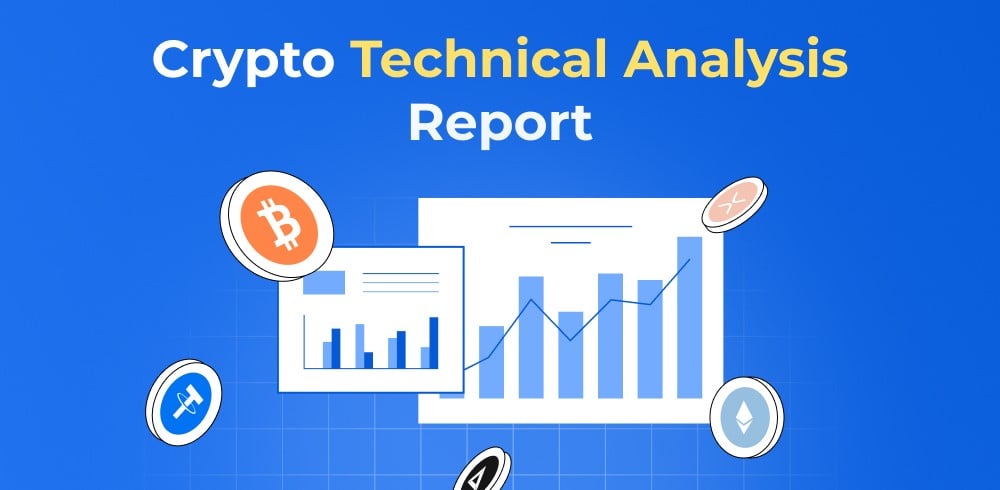Crypto investments have exploded in popularity in recent years. Every few months we read about coins that have risen over 100% in just a few days. But users looking for more stable returns may opt into staking or Defi applications. However, evaluating the costs and returns of such solutions can be difficult. To help you understand this, let us decode “what are APR and APY and how are they different?”
What is APR?
The simpler of the two measures is the APR or Annual Percentage Rate. This is applied for loans or other forms of borrowings like credit card debt or personal borrowings. APR is a broad measure that includes the base interest rate plus costs like insurance and fees.
What is APY?
The second popular measure is APY or Annual Percentage Yield. Unlike APR, this is applied for investments you make or money you receive. It is also known as Effective Annual Yield or EAR.
The higher the APY, the more you will earn in a year. But the differentiating factor of APY is that it takes compounding into account. This means it includes the benefit of reinvesting your returns at pre-specified intervals.
How Does APR Work?
APR works on the principle of simple interest. Therefore, financial institutions often quote the APR when marketing the interest rate on loans. This makes it appear like borrowers will pay a low amount of interest.
However, this does not account for interest that may be applied several times in a year. Compounding interest rates in a single year can lead to borrowers paying higher interest than expected. Thus APR may not reflect the actual interest rate of the loan.
Read more: Crypto Investing vs Crypto Trading
How Does APR Work in Crypto?
Since APR is most commonly used in loans, crypto users find it when they want to borrow funds from Defi applications. The platform uses APR since the user may think they are paying low interest, while the actual payments may be higher because of compounding.
How to Calculate APR?
What is annual percentage rate formula? Calculating the APR of an investment is easy.
APR = R x N
Where
R – Interest rate in a period
N – Number of periods.
How Does APY Work?
APY is commonly quoted for investments you make since it makes the returns look larger than the APR. The figure is larger due to the principle of compounding. To understand this, let’s take an example.
Assume you invest ₹1,000 at a 10% interest rate. In two years, simple interest will give you a total amount of ₹1,200 while compounding annually gives you ₹1,210. While this may seem like a small amount, over the years it can add up to a massive difference.
How Does APY Work in Crypto?
The most common use of APY in crypto is for lending or providing liquidity. Such platforms automatically add the returns you earn from lending out your funds regularly. Thus, the funds are compounded in the liquidity pool to give you higher returns.
How To Calculate APY?
What is annual percentage yield formula? The formula for calculating APY is a little more complicated than APR.
APY = (1 + R)N – 1
Where,
R = Interest rate in a period
N = Number of periods
Read more: Ways to Calculate Profit and Loss of Your Crypto Portfolio
Difference Between APR and APY
| Feature | APR | APY |
| Included measures | Interest rates, closing rates, insurance | Interest rate, compounding of interest |
| Formula | APR = R x N | APY = (1+R)N – 1 |
| Use Case | Loans, Borrowings, Funds overdue for payment | Investments, Providing liquidity |
| Changes in Rates | Fixed or Flexible rate loans | Variable interest rate on investments |
What Is Better APR Or APY?
Generally, APY is a better measure to focus on for loans or investments. It provides a more inclusive view of the interest you earn or have to pay. The more the interest compounds, the larger the gap is between APR and APY.
Always be careful of the figure being quoted, as some institutions may entice you with rates that look low at first. When comparing the APR or APY between different providers, ensure that the compounding period is the same between them.
You can read more about the latest events in Crypto on ZebPay blogs.
Disclaimer: Crypto products and NFTs are unregulated and can be highly risky. There may be no regulatory recourse for any loss from such transactions. Each investor must do his/her own research or seek independent advice if necessary before initiating any transactions in crypto products and NFTs. The views, thoughts, and opinions expressed in the article belong solely to the author, and not to ZebPay or the author’s employer or other groups or individuals. ZebPay shall not be held liable for any acts or omissions, or losses incurred by the investors. ZebPay has not received any compensation in cash or kind for the above article and the article is provided “as is”, with no guarantee of completeness, accuracy, timeliness or of the results obtained from the use of this information.
FAQs on APR vs APY
Why is the APR Important?
The APR is important because it takes into account factors such as closing rates, insurance rates and other costs associated with an investment. This is more inclusive than just the interest rate since it reflects the amount paid or earned better.
What is APR and APY in Crypto?
As mentioned above, APR and APY are used frequently in crypto. APR is used to show the interest paid on borrowings like loans from DeFi applications. APY is the return earned from an investment on an annual basis. This may be on funds you lend or liquidity you provide, which compounds the interest earned automatically.
Which Crypto has the Highest Staking APY?
Play-to-earn games like Gods Unchained and Axie Infinity provide an APY of over 80% upon staking their native tokens. Alternatively, the DeFi platform Panther Protocol can provide over 100% APY.
How Do I Convert APR to APY?
The formula for conversion is –
APY = (1 + APR/N)N – 1, Where N is the number of periods.
Alternatively, you can use an APR to APY calculator, which simplifies the process and reduces the chance of error.
Is APY and APR the Same?
As mentioned above, APR is not the same as APY. The main difference between the two measures is that APY takes into account your investments including the compounding of interest rates.






